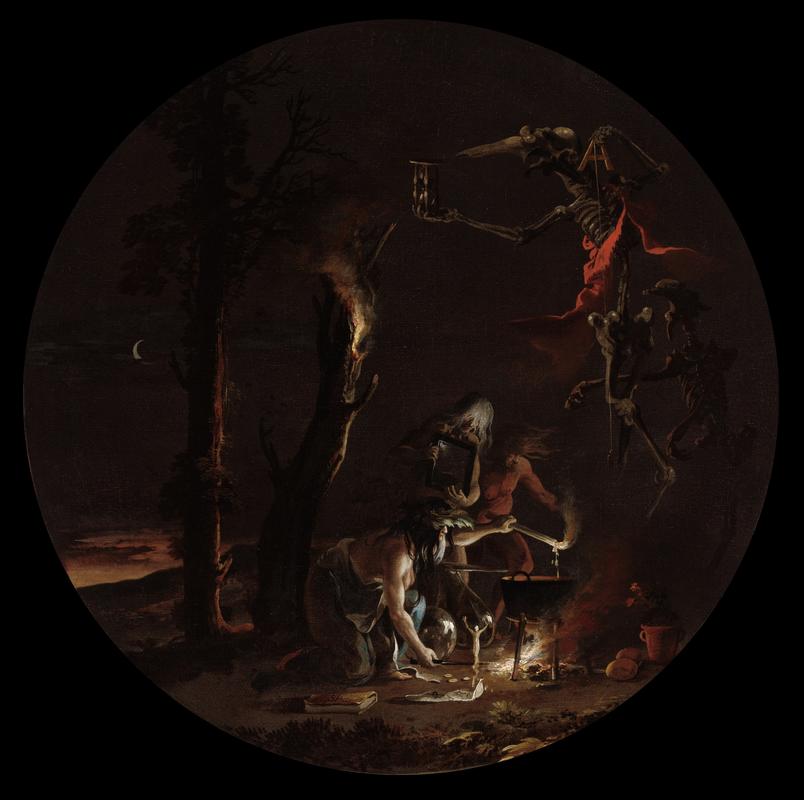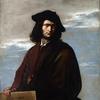More about Scenes of Witchcraft: Evening

Contributor
As Salvator Rosa’s 1600s painting Scenes of Witchcraft: Evening makes perfectly clear, people have been dreaming of love potions since, well, since love itself existed.
Rosa, who was both a painter and a poet, frequently painted themes, stories, or topics that were popular in literature. The topic here is the crafting of love potions by witches, and this can be traced as far back as Virgil and Horace in the world of poetry. And these poets’ influence on this painting and its portrayal of dark magic is quite present. To begin with, in a Virgil poem, Daphne’s abandoned mistress orders a witch to build a statuette of Daphne using wax. And, in Horace, a wax statuette was also used for a lover’s cursed potion. Wax statuettes were believed to operate the same way that a voodoo doll does--damage done to a wax statuette would also lead to damage done to the person in real life, heavy stuff.
But, these types of practices weren’t necessarily something that Rosa pulled from the classic poets. They were also actual, contemporary, popular practices of witches. In fact, in 1631, this method of wax statuette black magic was actually attempted in order to assassinate Pope Urban VIII. Surprisingly it was ineffectual and only the wax statuette was severely damaged.
Rosa was a true pioneer of the multimedia approach. He wrote poems accompanying his paintings. In this case, this painting is one of a series of four paintings he called Scenes of Witchcraft (Morning and Day). The four pieces were accompanied by a long poem called "La Strega" (The Witch) about a witch named Phyllis who takes revenge on her ex-lover via black magic potion composed of “ground powders, mystic gems, snakes, owls, and stinking blood…” Now if only we knew what kinds of ground powders and mystic gems Phyllis used, we might be able to get somewhere on this love potion...
Sources
- Anonymous. "Scenes of Witchcraft: Evening." Cleveland Museum of Art. January 21, 2019. Accessed June 16, 2019. https://clevelandart.org/art/1977.37.2.
- Salerno, Luigi, and Ira Kohn. "Four Witchcraft Scenes by Salvator Rosa." The Bulletin of the Cleveland Museum of Art 65, no. 7 (1978): 225-31. http://www.jstor.org.libproxy.newschool.edu/stable/25159591.
- Stratton, Kimberly B. Naming the Witch: Magic, Ideology, and Stereotype in the Ancient World. New York: Columbia University Press, 2007.
- Tal, Guy. "Witches on Top: Magic, Power, and Imagination in the Art of Early Modern Italy." Order No. 3230548, Indiana University, 2006. https://login.libproxy.newschool.edu/login?url=https://search-proquest-…












The thing that first drew me to this was the title: "Scenes of Witchcraft: Evening". It's a title that implies it's part of a set of images depicting witchcraft and heretical magic.
I really enjoy the ambiance & lighting of this painting, because there's just enough light to see the people and what they're doing, but not enough light to make everything in the piece able to be seen from a distance (just like an evening). You would have to get very close to this piece to make out all the intricate details of it, giving you a different idea of what's going on rather than if you were to look at it from a distance.
For example, you may not be able to see how detailed the wax statuette is if you weren't looking at it up close, but you would be able to see how the subtleties of the background (the clouds, moon, grass) make the foreground appear much more realistic from that same distance.